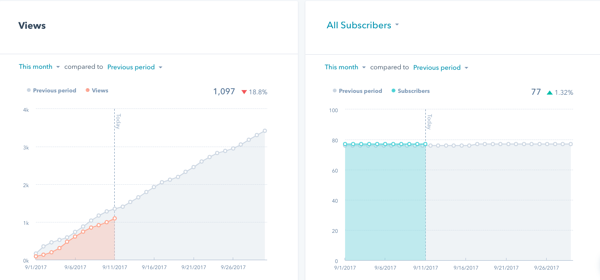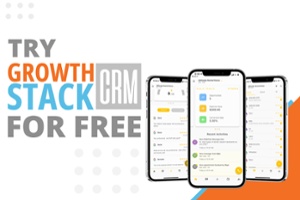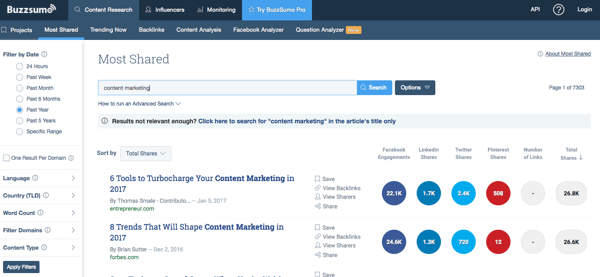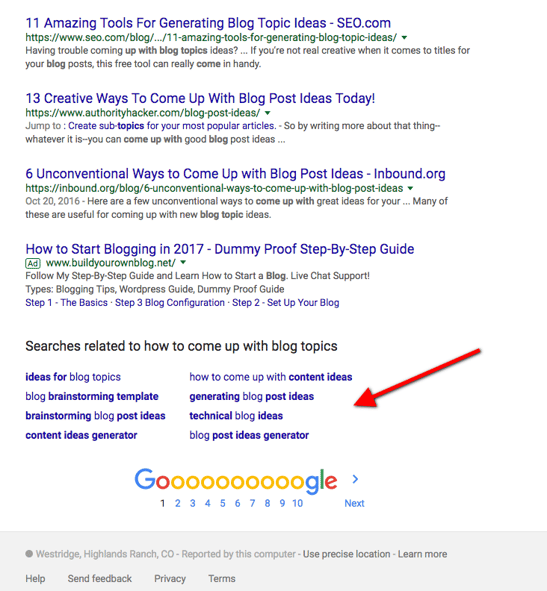5 Data-Driven Strategies For Generating Blog Topics
One of the biggest challenges of being a marketer is content creation – mainly thinking of content to create.
Actually creating the content is easy compared to spending hours brainstorming blog topics.
And, even worse, finding a blog topic is only half the battle. Finding blog topics that people actually read? That’s where it’s at. And by it, I mean hair tearing out. Headaches. Staring at Google Docs so long your vision blurs over.
Shouldn’t there be an easier way?
You’re not alone in your struggle. In fact, 60 percent of B2B marketers say that their biggest challenge will be producing content that engages customers. If you’re desperate for some tips for thinking up blog topics, we’ve got you covered. Here are eight proven and data-driven ways for you to create blog topics that will convert leads.
5 Tips For Coming Up With Killer Blog Topics
1. Check Your Blog Analytics
One of the easiest ways to think of blog topics that will get leads is to see what’s worked for you in the past. After all, if it’s worked before, chances are it’ll work again.

Check out the analytics feature of your blog site to determine which blogs have the most clicks, collected the most contacts or had the longest view time. You’ll want to determine which of these factors is most important for your business when analyzing posts. This site has some awesome free analytics tools you can use to rank your posts on a deeper level.
Keep in mind that posts that have been promoted on social media or pushed in eblasts will likely have more reach than ones that weren’t. You should also pay attention to the formatting of the blog titles to see if the headlines themselves may be impacting clicks.
Once you’ve determined which of your past blogs were successful, you can get the most out of this content by:
- Updating, refreshing and republishing the posts for maximum reach
- Writing new blogs that expand on the topics covered in the successful posts
- Creating a fresh list of blog topics directly related to the successful ones

This tactic typically works best if you’ve been blogging for several years. However, if you don’t have many successful blogs to pull from, you can head down to Tactic 2: seeing what works for competitors.
2. Determine What Works For Your Competitors
I know. You hate your competitors. Those guys are awful, right? So why would you ever want to copy them?
Well, as much as I hate to say it, the other guys might be doing better than you – when it comes to blogging, that is. Determine which of your rival’s posts get the highest traffic. Then, you can use this knowledge to create a list of related topics to maximize your blog potential.
When evaluating your competitor’s blogs, you’re at a disadvantage in that you don’t have access to their full analytics. You do, however, have access to other tools to help you get an idea about what works for them.
BuzzSumo is a great option because it provides information about how many shares competitor content gets on social media sites. If your competitors share blogs on Facebook, you can also use the built-in Facebook analytics feature to evaluate the impact of those posts.

Something to keep in mind when conducting a blog competitive analysis, however, is that you should only focus on competitors with successful blogs. This my sound obvious, but it can be challenging to know how well a competitor’s blog performs based on Facebook alone. Consider looking at national, big-name competitors rather than local small businesses.
3. See What’s Trending
Once you’ve exhausted your existing blog content and your competitors, a good next step is to see what’s trending on a local and world-wide scale. Find trustworthy, heavy-traffic news sites relevant to your industry and stay on top of the latest news and trends. Then, you can create posts tying to these news topics.
This technique has extra SEO benefits as well. Because you link to these Google-trusted news sites, you add to your blog’s credibility. According to a Google Strategist, high-quality content and link building are the two most important factors Google uses for search ranking. Quality backlinks also build credibility of your website as a whole, increasing reach and potential for lead conversion.
Some great sites to start with are Forbes, Huffington Post and Science Daily.
4. Don’t Ignore Related Searches
At the bottom of every Google search is an often overlooked box that could hold the secret for truly successful blog topics. It’s called the related searches, and it looks like this:

If you’re like me, you scroll right past this box nine times out of 10. It certainly isn’t the first place you would consider searching for blog topics. But, it can be surprisingly handy, especially on those days when you’re all out of ideas.
These searches are pulled from the most common Google queries containing the keyword or a similar keyword to the ones in your search. Because they are so common, these searches have a greater chance of appealing to your mass audience. This makes the box ideal for crafting blog topics that will get clicks.
The best way to use this built-in Google tool is to combine it with Tactics 1 and 2. Once you have a blog that works well for you or for a competitor, type the title into a Google query and scroll down.
You’ll need some discretion to choose which searches are going to be relevant for your buyer personas (for instance, “what is selling” probably won’t be a blog business owners and marketing directors would click on, even though it came up in my search for “marketing.”)
5. Listen To Your Customers
Finally, the last tactic for thinking of blog topics when you’re all out of ideas is to simply listen to your customers. They’ll be the ones reading these blogs. If you know what they’re really interested in, you’ll be able to better target their needs.
The two best ways to do this are to survey your current blog subscribers and host a focus group with your ideal customers.
Surveys
Surveying current subscribers is especially easy considering you already have their emails on file. All you have to do is create a quick survey to find out what topics matter to them, what their biggest pain points are, and what questions they have about your industry.
Focus Groups
Focus groups are more time consuming and require more planning. However, you’ll likely get more in-depth answers from a focus group than from a survey. And you’ll be able to bounce ideas off participants to gain a deeper understanding of what matters to them.
Once you have these answers, you’ll be able to think of blog topics specifically targeted to your audience. Better targeting = more clicks.
Want more blogging tips? Click the button below!






